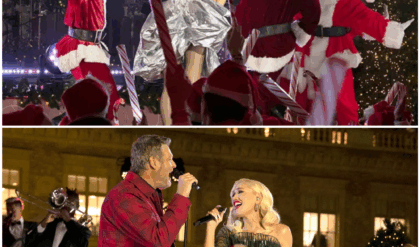In a heart-wrenching legal battle that underscores the growing scrutiny on electric vehicle safety, the parents of a 19-year-old college student have filed a wrongful death lawsuit against Tesla, alleging that design flaws in the Cybertruck’s doors trapped their daughter inside a burning vehicle, leading to her untimely death. The case, lodged in Alameda County Superior Court in California on October 2, 2025, has sent shockwaves through the automotive industry, spotlighting potential risks in Tesla’s high-tech features under the leadership of CEO Elon Musk. As Tesla continues to push boundaries with innovative designs, this lawsuit raises profound questions about the balance between cutting-edge technology and passenger safety, especially in emergency situations.
The incident at the center of the lawsuit unfolded on a fateful night in November 2024 in Piedmont, a quiet suburb in the San Francisco Bay Area. Krysta Tsukahara, a vibrant 19-year-old student at the Savannah College of Art and Design in Georgia, was home for Thanksgiving break when she joined friends for what should have been a casual outing. Riding in the backseat of a Tesla Cybertruck driven by her 19-year-old classmate Soren Dixon, Tsukahara found herself in a nightmare scenario. According to details emerging from the crash investigation, the angular, stainless-steel-clad pickup truck veered off the road at high speed and slammed into a tree. The impact, while severe, was not immediately fatal for the rear passengers. Toxicology reports later revealed that Dixon had alcohol, cocaine, and methamphetamine in his system, contributing to the loss of control.
What followed was a horrifying escalation. The Cybertruck’s high-voltage battery pack ignited, engulfing the vehicle in flames that reached temperatures hot enough to vaporize bones. Tsukahara and fellow rear passenger Jack Nelson, a 20-year-old student at the University of Colorado Boulder, suffered only minor injuries from the collision itself but perished from burns and smoke inhalation. A fourth passenger in the front seat was rescued by a quick-thinking witness, Matt Riordan, who was driving behind the group. Riordan smashed the front window with a tree branch to pull the survivor out, but attempts to reach the back were futile. The doors, reliant on electronic mechanisms, failed to open amid the power loss from the crash, effectively turning the futuristic truck into what the lawsuit describes as a “death trap.”
Krysta Tsukahara was more than a statistic in this tragedy. Described by her parents, Carl and Noelle Tsukahara, as a talented artist with a bright future, she was passionate about design and creativity—ironically, fields that align with Tesla’s innovative ethos. Her family has spoken of the profound silence that followed the crash, enduring not just the loss but the frustration of unanswered questions about how a vehicle from a trillion-dollar company could fail so catastrophically. “We’ve lost our daughter in the most horrifying way imaginable,” Carl Tsukahara said in a statement, emphasizing the family’s quest for accountability. The Tsukaharas are seeking unspecified punitive damages, aiming to hold Tesla responsible for what they claim is a preventable design oversight.
The core of the lawsuit revolves around the Cybertruck’s door system, a hallmark of Tesla’s minimalist, tech-forward approach. Unlike traditional vehicles with protruding handles and mechanical latches, the Cybertruck features flush-mounted doors that open electronically with a button press. This design, pioneered by Tesla and now emulated by other EV makers, enhances aerodynamics and gives the vehicle its sleek, armored aesthetic. However, it depends on a separate 12-volt battery for operation—distinct from the main high-voltage pack that powers the motors. In a crash, if power is disrupted, the doors can become inoperable, leaving occupants reliant on manual overrides.
According to the suit, these manual releases are woefully inadequate. For rear passengers like Tsukahara, escaping requires removing a rubber mat from the door’s storage pocket, locating a hidden mechanical cable, pulling it forward, and then pushing the heavy door open—all while potentially disoriented, injured, or amid rising flames. The complaint argues that this process is neither intuitive nor conspicuous, especially in panic-inducing emergencies. “Tesla had repeated and direct notice of the risks associated with its reliance on electronic door systems,” the filing states, pointing to over a decade of reported incidents where owners, bystanders, and first responders struggled with trapped occupants in post-crash fires.
This isn’t an isolated grievance. Jack Nelson’s family filed a parallel lawsuit on the same day, echoing similar claims about the doors’ defects turning a survivable accident into a fatal one. Their attorney, Matthew Davis, stressed that while individual actions may have caused the crash, Tesla bears responsibility for safety systems that fail when needed most. The lawsuits come amid broader concerns about the Cybertruck, which has faced eight recalls since its launch in late 2023. Issues range from accelerator pedals sticking due to faulty covers to body panels detaching from adhesive failures. Sales have underperformed expectations, with analysts citing high prices—starting at around $100,000—and reliability woes as deterrents.
Elon Musk, Tesla’s visionary leader known for his bold innovations and social media presence, has yet to publicly address the lawsuits directly. However, Tesla’s chief designer, Franz von Holzhausen, acknowledged door challenges in a September 2025 podcast interview on Bloomberg’s “Hot Pursuit.” He revealed that the company is working on redesigned handles that integrate electronic and manual releases into a single, more user-friendly mechanism. This admission suggests internal recognition of the problem, but critics argue it’s too little, too late for families like the Tsukaharas.
The case also ties into ongoing federal investigations by the National Highway Traffic Safety Administration (NHTSA). Just weeks before the filings, NHTSA launched a probe into the door handles of the 2021 Tesla Model Y, focusing on external access without manual overrides. Broader scrutiny of Tesla’s electronic systems dates back years, including a 2016 incident where a driver perished in a burning Model S, unable to escape due to power failure. In August 2025, a Florida jury awarded over $240 million in damages for a 2019 crash involving Tesla’s Autopilot, highlighting a pattern of legal setbacks for the company.
Beyond the courtroom, this tragedy amplifies debates about electric vehicle safety in an era of rapid technological advancement. EVs like the Cybertruck promise sustainability and performance, with their massive battery packs enabling zero-emission drives and instant torque. Yet, lithium-ion batteries can ignite in “thermal runaway” events, producing intense, hard-to-extinguish fires. Traditional gas cars burn too, but EV fires often burn hotter and longer, complicating rescues. Tesla has long touted its vehicles as among the safest on the road, citing crash test data and over-the-air software updates that address issues remotely. Musk himself has defended the Cybertruck’s “apocalypse-proof” build, emphasizing its ultra-hard stainless steel exoskeleton designed to withstand extreme conditions.
However, detractors point to a culture of rushing products to market under Musk’s aggressive timelines. The Cybertruck’s development was marred by delays and controversies, from its infamous unveiling where armored glass shattered during a demo to real-world complaints about build quality. Owners have reported everything from rust on the “stainless” panels to software glitches affecting critical systems. In the wake of the Piedmont crash, social media buzzed with survivor stories and warnings, with some users dubbing the truck a “rolling hazard.” One viral post from a first responder detailed the challenges of extricating passengers from EVs, calling for industry-wide standards on emergency access.
For the Tsukahara family, the lawsuit is about more than compensation—it’s a call for change. “How does a company this powerful release a vehicle that’s so unsafe?” Noelle Tsukahara asked in an emotional statement. Their legal team, led by Roger Dreyer, described Tsukahara’s final moments as “unimaginable pain and emotional distress,” trapped as the fire raged. The suit accuses Tesla of prioritizing aesthetics and novelty over proven safety measures, potentially influencing future regulations.
As the case progresses, it could set precedents for EV liability, pressuring manufacturers to rethink features like electronic doors. Tesla, valued at over $1 trillion, faces mounting pressure from investors and regulators alike. Musk, ever the disruptor, might use this as fuel for iteration, but for grieving families, the cost has already been too high. This lawsuit isn’t just about one daughter’s death—it’s a stark reminder that in the race to the future, human lives must not be left behind.





